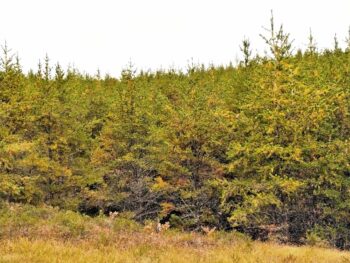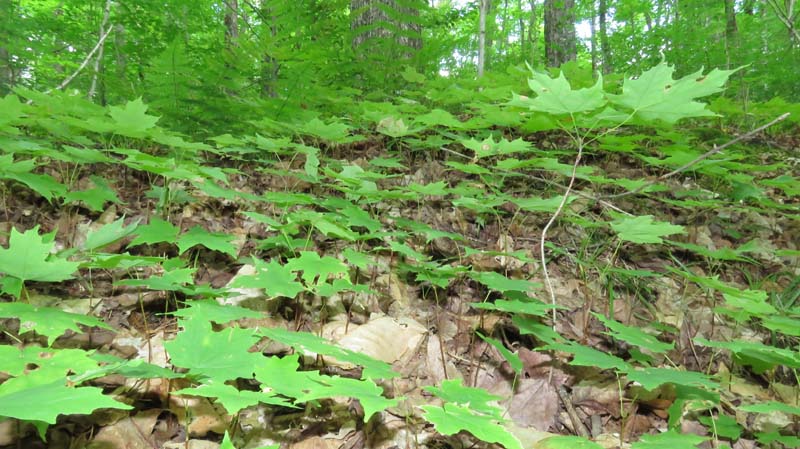ROSCOMMON – The components of a forest, from the trees to the soil, have been studied for decades.
Taking this actively growing body of knowledge and prescribing a set of practices to better grow and protect forests is the art and science of “silviculture”. Nudging ever-changing forests into trajectories that better benefit both humans and forest systems requires thought and wisdom.
Why manage in the first place? A good question, with good answers. A managed forest produces more “stuff” and helps keep forests healthy. “Stuff” includes timber, habitat, water quality, forest vigor, and many other aspects in the life of a forest and our lifestyles.
In Michigan, forest characteristics geographically vary in a mosaic of conditions, in as little as a few hundred yards. Sometimes this woodsy tapestry is obvious, such as the gradual transformation from northern hardwoods into swamp conifers. However, much of the time this variability is more subtle, requiring an experienced eye to better see.
A professional forester can be creative and a forest owner discovers another reason to get excited about their woodland.
The most common form of forest management in Michigan is the “selection system.” It involves a successive set of thinning and improvement cuts, over decades, that steers the forest towards a healthier ecology and higher quality timber. For this system to work, young trees must be fairly tolerant of the shade cast by larger trees.
The amount of light penetrating the forest canopy and reaching the forest floor nurses tree regeneration and optimizes growth and quality of both pole-sized and sawtimber-sized trees. Northern hardwoods, those forests dominated by sugar maple, are the primary target of forest management.

A range of cutting patterns adds choices to selection management. Individual trees can be uniformly harvested, or small groups of trees can be harvested to encourage certain species, or narrow bands can be cleared in progressive “waves” throughout a stand.
One point of caution; be wary of the term “select cut”. Sometimes, this is a misnomer for the degrading practice of “selecting the best and leaving the rest”.
The next most common system is clear cutting, which has difficulty with its social license because of the powerful visual change. Clear cutting is purposely designed to mimic natural “catastrophic disturbances” such as windstorms, wildfire, and massive pest outbreaks.
Several tree species are adapted to, and dependent upon, these sorts of “disturbances” for regeneration. These species such as Aspen and Jackpine, tend to be intolerant of shade and need full sunlight in order to grow and mature.
An active example of this dynamic would be the 2012 Duck Lake fire in the eastern Upper Peninsula. About 22,000 acres of jack pine were burned from a lightning-ignited wildfire. If you drive the sand roads today, you’ll see the mantle of waist-high young jack pine across rolling hills. The transformation and rejuvenation are remarkable.
Rather than waiting for the large and destructive “catastrophic disturbances” of nature, clear cutting strategically regenerates these forest types, piece by piece, without the damage to structures and other human infrastructure.
The third broad category of management is shelter wood harvesting. Some look at this as a crossbreed of selection and clear cutting systems, although it’s really in a class of its own.
Shelter wood management consists of two or three harvests over a decade or so. If desired advance regeneration does not exist in the forest understory, the first cut will open the stand to encourage natural regeneration.
Once seedlings are secured, a second heavy cut opens the stand allowing more light which accelerates the growth of the new forest. The remaining canopy nurses the young trees through a bit of cooling shade and typically consists of better quality, windfirm trees. The final cut then removes these mature trees, allowing the sapling-sized trees to freely grow.
High quality oak stands particularly benefit from shelter wood systems.
Forest management has four general goals.
- Provide for forest regeneration.
- Forest products for the good of the owner and society.
- Improve the quality and health of the forest.
- Satisfy the desires of the forest owner
Properly managing a forest embraces a universe of ecological considerations, forest owner goals, and economic environments. And, that forester may become a best friend of the family.


